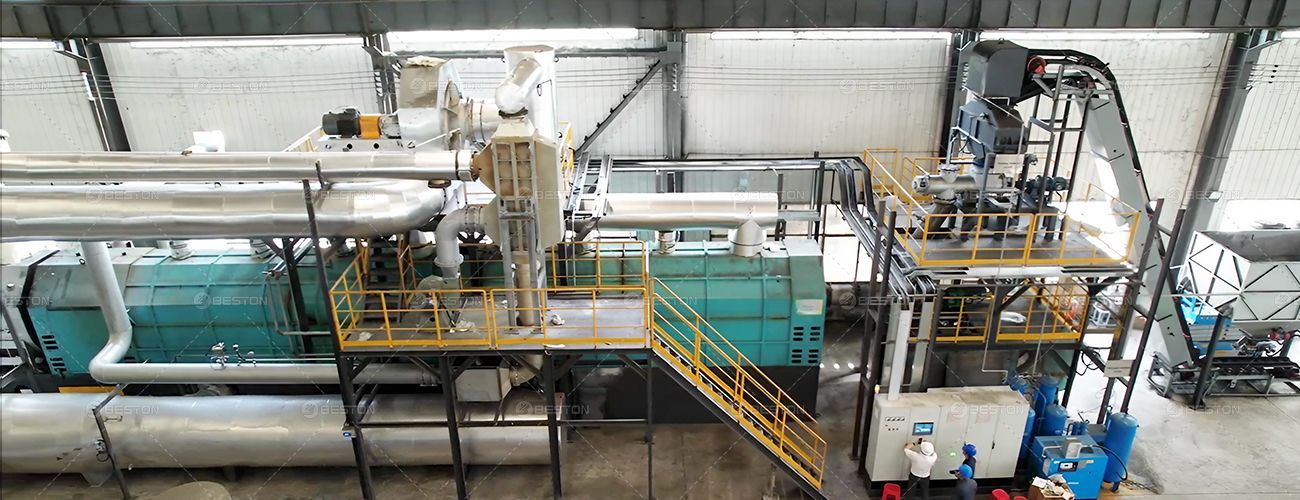Strategic Deployment of TDU in Petroleum Waste Management

The petroleum industry generates a substantial volume of complex waste materials, including drilling muds, tank bottom sludge, and refinery residues. These wastes are characterized by a mixture of hydrocarbons, water, and mineral solids that pose environmental and operational challenges. The deployment of a thermal desorption unit (TDU) has emerged as a highly effective technology for the recovery of hydrocarbons and the minimization of waste volume. By utilizing controlled thermal processes, TDUs enable the separation and reclamation of valuable resources while ensuring regulatory compliance and environmental protection.
Principle of Thermal Desorption
The operation of a thermal desorption unit is based on the application of indirect heat to volatilize hydrocarbons and water from contaminated solids. Unlike incineration, thermal desorption does not involve combustion of the feedstock. Instead, it operates under controlled temperatures, typically between 300°C and 600°C, sufficient to vaporize organic contaminants without decomposing them.
The process begins with the introduction of petroleum waste into the primary desorption chamber. The heat, often provided through conduction or convection, drives off volatile compounds, which are then carried by an inert gas stream into a condensation and recovery system. The recovered vapors are subsequently cooled, separated, and condensed into reusable hydrocarbons and clean water. The remaining solids, stripped of volatile content, can often be reused as construction aggregate or safely disposed of in compliance with environmental standards.
This modular process design allows the TDU to be adapted for various waste streams, from oily drill cuttings to refinery sludge, with minimal modification. It delivers a balanced combination of hydrocarbon recovery, waste minimization, and environmental safety.
Deployment Considerations in Petroleum Operations
The strategic deployment of an oil sludge treatment plant depends on several operational and regulatory factors. In offshore and onshore drilling operations, mobility and compact design are critical. Mobile TDU systems can be mounted on skids or trailers, allowing direct deployment to well sites where oily wastes are generated. This on-site treatment capability reduces the need for transportation and external disposal, significantly lowering logistics and environmental risks.
In refinery and petrochemical facilities, stationary TDUs are preferred due to higher throughput requirements. These systems are integrated into waste management infrastructure, treating tank bottom sludge, spent catalysts, and contaminated soils. By recovering hydrocarbons that would otherwise be lost, refineries achieve both cost recovery and reduced waste liability.
Site selection and feedstock characterization are essential steps in TDU deployment. The composition, moisture content, and hydrocarbon fraction of the waste determine the optimal operating temperature and residence time. Advanced control systems ensure stable operation under varying feed conditions, maintaining efficiency and product quality while preventing overheating or incomplete desorption.
Energy Efficiency and Process Optimization
Energy management is a key determinant of TDU performance and cost-effectiveness. Modern units employ energy recovery systems that utilize the heat from exhaust gases to preheat incoming feed or generate process steam. Such heat integration significantly reduces fuel consumption and operational costs.
Automation plays a crucial role in optimizing energy use. Sensors and programmable logic controllers continuously monitor parameters such as temperature gradients, gas flow, and hydrocarbon vapor concentration. Real-time data feedback enables precise control over the thermal environment, enhancing both desorption efficiency and product recovery.
In some designs, the recovered hydrocarbon vapors are used as auxiliary fuel for the system, creating a self-sustaining thermal cycle. This closed-loop approach minimizes external fuel demand, thereby improving energy efficiency and reducing greenhouse gas emissions.
Environmental Compliance and Waste Valorization
The implementation of thermal desorption technology aligns with stringent environmental regulations governing petroleum waste management. The process effectively reduces total petroleum hydrocarbons (TPH) in treated solids to below regulatory thresholds, allowing safe disposal or reuse. By converting waste into reusable materials, TDU operations support the principles of waste valorization and circular resource utilization.
Air emission control is an integral aspect of system design. Condensers, scrubbers, and thermal oxidizers ensure that volatile organic compounds and residual hydrocarbons are properly managed before release. Compliance with international standards such as the EU Industrial Emissions Directive (IED) and the U.S. EPA Resource Conservation and Recovery Act (RCRA) underscores the technology’s environmental legitimacy.
In addition to compliance, TDU deployment provides quantifiable sustainability benefits. Hydrocarbon recovery reduces the demand for virgin crude extraction, while the treatment of contaminated soil restores land for productive use. These outcomes contribute directly to corporate environmental, social, and governance (ESG) objectives, reinforcing a company’s commitment to sustainable operations.
Economic and Strategic Value
Beyond environmental compliance, the economic return of a thermal desorption unit is derived from hydrocarbon recovery and reduced waste management costs. Reclaimed oil can be reintroduced into production processes or sold as a secondary fuel, offsetting the capital expenditure associated with the system. In regions where waste disposal costs are high, the reduction in waste volume represents substantial financial savings.
The modular and scalable architecture of modern TDUs allows flexible deployment in diverse operational contexts, from temporary drilling projects to permanent refinery installations. Their adaptability enables petroleum operators to align waste treatment capacity with fluctuating production demands, avoiding underutilization or excessive capacity investments.
The strategic deployment of thermal desorption units transforms petroleum waste from a liability into a resource. Through precise thermal engineering, energy recovery, and environmental stewardship, TDU technology bridges the gap between industrial efficiency and ecological responsibility. It represents not only a compliance tool but a cornerstone of modern sustainable petroleum operations.



